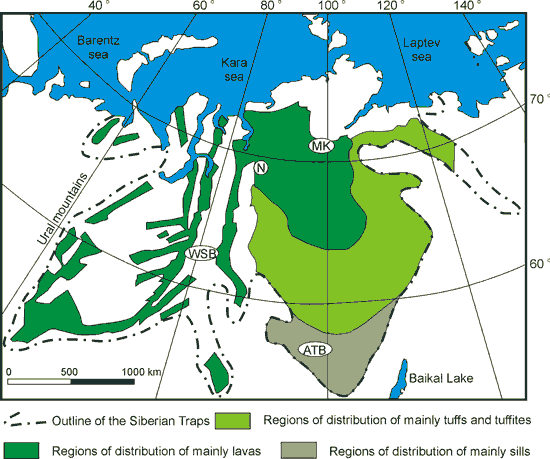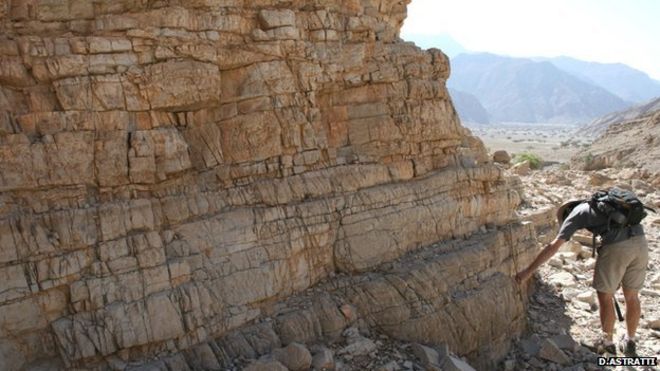The Oceans - Permian ocean acidification
The Permian-Triassic mass extinction took place 252 million years ago.
.jpg)


The carbon was released at a similar rate to modern emissions.
Changes to ocean acidity would have been one of the consequences.

.jpg)
South China
More than 90% of marine species were wiped out , and more than two-thirds of the animals living on land.
The event played out over 60,000 years.
Acidification of the oceans lasted for about 10,000 years.
Two separate pulses of CO2 into the atmosphere - a "one-two punch" - may have been involved in the die-off, according to new research.
CO2 was released by massive volcanism from the Siberian Traps, now represented as a large region of volcanic rock.
The volcanic activity also sent magma sideways through carbon-rich rocks like coal and limestone, in effect 'cooking' the rocks, and creating lots of CO2.
The volcanic activity also sent magma sideways through carbon-rich rocks like coal and limestone, in effect 'cooking' the rocks, and creating lots of CO2.

The research team, led by Dr Matthew Clarkson from the University of Edinburgh, examined rocks in the United Arab Emirates.

The rocks, which were on the ocean floor at the time, preserve a detailed record of changing oceanic conditions.
The carbon was released at a similar rate to modern emissions.
Changes to ocean acidity would have been one of the consequences.

Dr Clarkson says "Scientists have long suspected that an ocean acidification event occurred during the greatest mass extinction of all time, but direct evidence has been lacking until now.
"This is a worrying finding, considering that we can already see an increase in ocean acidity today that is the result of human carbon emissions."